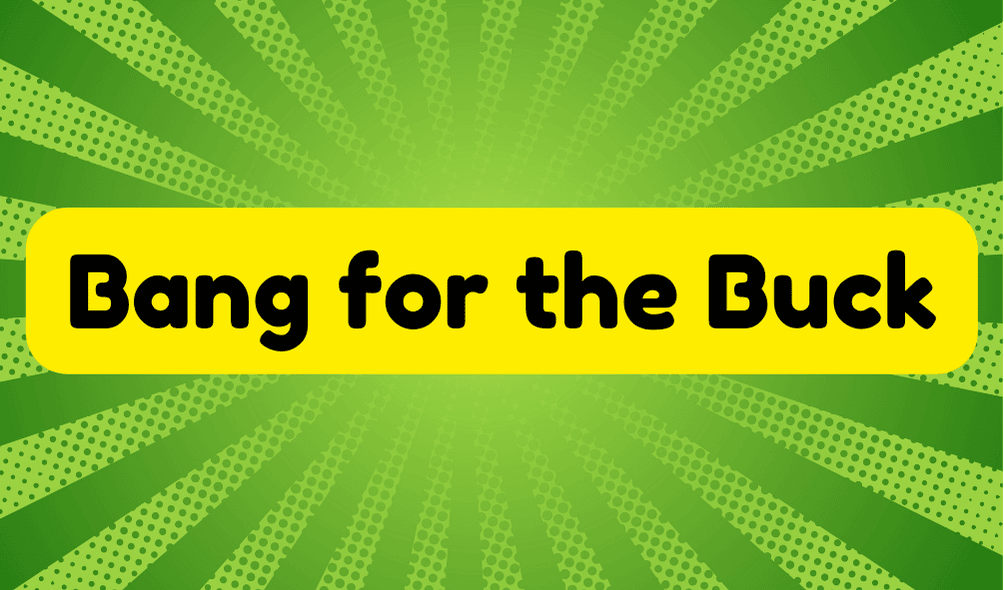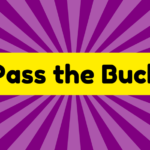"Bang for the buck" refers to getting the most value for your money. Originating in the 1950s during discussions about military efficiency, it's now commonly used to evaluate consumer choices. For example, when you find a gym offering a month-long trial at half price, you're getting great bang for your buck. This phrase emphasizes smart spending by alerting you to the true worth of a deal. In today's market, where savvy consumers expect high quality at low prices, understanding this concept is essential. If you're curious about how to apply this idea more effectively, there's more insight ahead.
Synonyms
While you're searching for value in your purchases, you might come across several synonyms for "bang for the buck." Terms like "value for money," "cost-effective," and "best deal" capture the essence of getting more out of your financial investments. Understanding these can sharpen your purchasing strategy and highlight the inherent value proposition inherent in every deal.
Here are some engaging alternatives to contemplate:
- Price efficiency
- Maximum return
- Financial benefit
- Smart spending
- Worthwhile investment
Using these terms can guide your decision-making and enhance your cost efficiency. However, be cautious; not every deal labeled as a "bargain" truly delivers. Always analyze the value behind the words to verify your investments yield the best possible outcome.
Example of Sentences
Exploring the concept of "bang for the buck" can be made clearer with practical examples. Understanding how this term translates to real-life scenarios helps you grasp the essence of value optimization and cost efficiency. Consider these instances:
- A newly opened gym offers a month-long trial at half price, giving you great bang for the buck.
- DIY home improvement projects often yield better results without breaking the bank.
- Discounted electronics frequently maximize your investment compared to full-price items.
- A subscription service with monthly perks enhances your spending's value effectively.
- Choosing seasonal produce at your local market can deliver more freshness for your dollar.
These examples not only highlight the term's meaning but also challenge you to think critically about your purchases.
Origin
The term "bang for the buck" has its roots in political dialogue, where the interplay of excitement (bang) and financial value (buck) first emerged. It was first recorded in 1954, during President Eisenhower's administration, reflecting military strategy discussions of that era. This phrase was popularized by Charles Erwin Wilson, who promoted the New Look policy emphasizing nuclear reliance. In a political context, it highlighted the need for cost-effective defense budgets amidst Cold War tensions. However, this military jargon soon permeated everyday language, making its way into consumer discussions. While it suggests savvy spending, be cautious—it's critical to recognize that not every deal guarantees real value. Understanding its origin can provide insight into today's consumer-driven mindset.
Collocations
Many common collocations enhance the phrase "bang for the buck," making it more impactful in conversation and writing. By strategically using these phrases, you can improve value perception and highlight investment efficiency. Consider incorporating these collocations into your discussions:
- Get more bang for your buck
- Best bang for your buck
- Maximum bang for your buck
- Bang for your buck deal
- Real bang for your buck
These collocations not only simplify complex ideas but also strengthen your arguments. While they can help in finding better deals, be cautious — not every "great deal" is what it seems. Always evaluate the true value and effectiveness behind the words to guarantee you're making informed decisions that genuinely benefit you.
How to Use in Everyday Language
Understanding how to use "bang for the buck" in everyday language can greatly enhance your conversations about value and investment. You can incorporate this phrase to express value perception in various contexts, like when discussing purchases or services. For example, you might say, "That new gadget really gives you bang for the buck," emphasizing its cost effectiveness. Use it to compare options, helping others see which choice maximizes their investment. Be cautious, though! Not everything that claims to offer good bang for the buck actually delivers. Ascertain you're evaluating claims critically. By integrating this phrase thoughtfully, you not only sound savvy but also engage others in a conversation about smarter decision-making in their spending habits.
Why Is It Still Relevant Today?
In today's fast-paced marketplace, the concept of "bang for the buck" remains highly relevant as consumers continually seek the best value for their money. With heightened consumer awareness, you can maximize economic efficiency in every purchase. Let's break it down:
| Aspect | Importance | Result |
|---|---|---|
| Value | Consumers expect low prices | More bang for your buck |
| Quality | Higher quality products | Better outcomes for investments |
| Decision-Making | Informed choices | Lowers risk in spending |







